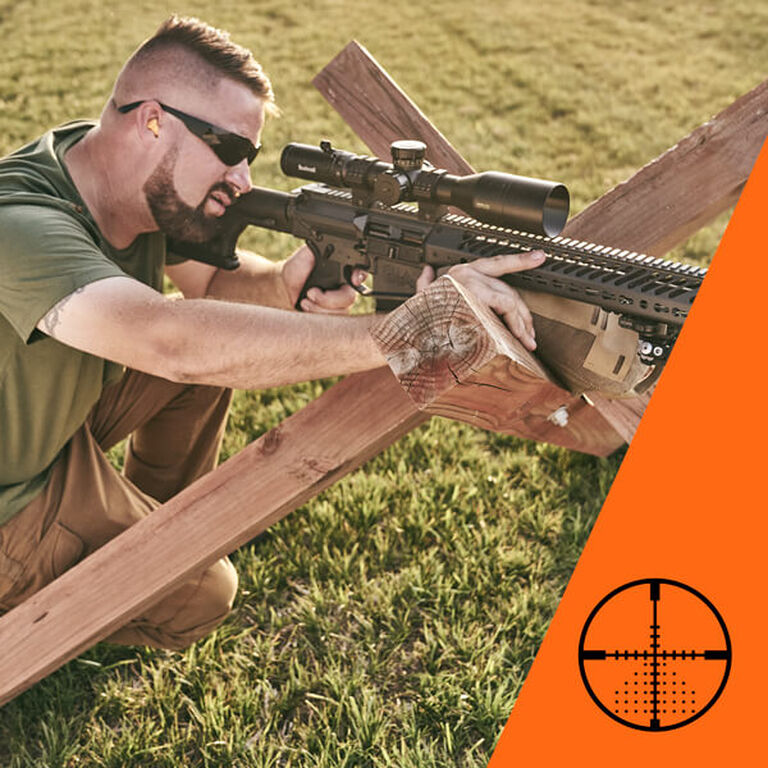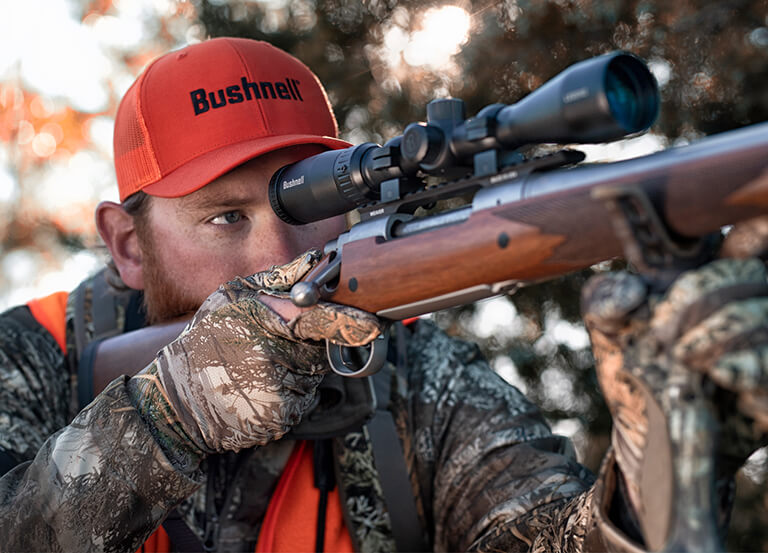Explore Our Reticles
Reticles are grouped into four categories.

Traditional Crosshairs
Includes classic and simple hunting reticles that have been used for generations.
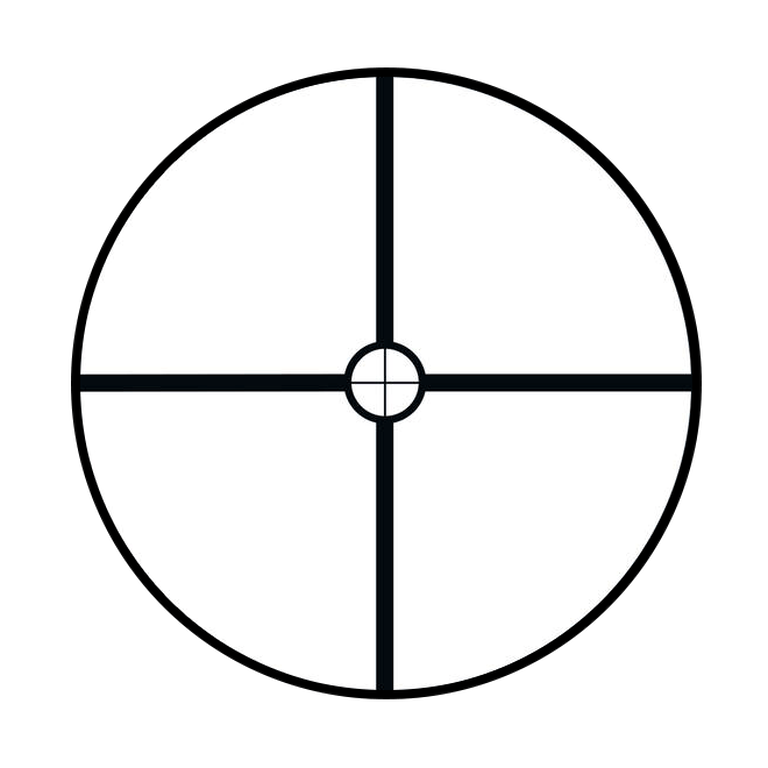
Circle-X Reticle
Features thick crosshairs (aka stadia) across most of the lens with a small circle encompassing narrow stadia in the center.
What this means: The broad stadia are easily seen against a background image, while still offering a tight center crosshair for precision shots.
Shop Circle-X Scopes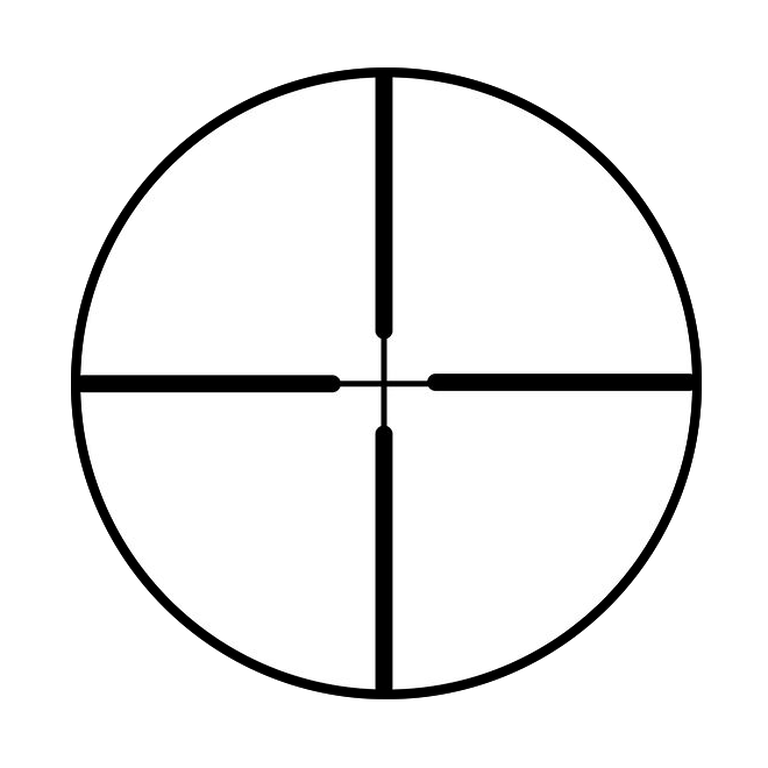
Multi-X Reticle
One of the most classic reticle designs featuring thin crosshairs (aka stadia) in the center with thicker stadia surrounding the crosshair.
What this means: The most tried and true reticle. The thick stadia on the outside of the thin stadia allow you to see the reticle against harsh background images. The thin stadia aid in making an accurate shot.
Shop Multi-X Scopes
Ballistics Drop Compensation (BDC)
These user-friendly, practical designs include specific hashmarks or points in the reticle to indicate how far bullets drop over specific distances based on specific calibers, bullet weight and velocity.
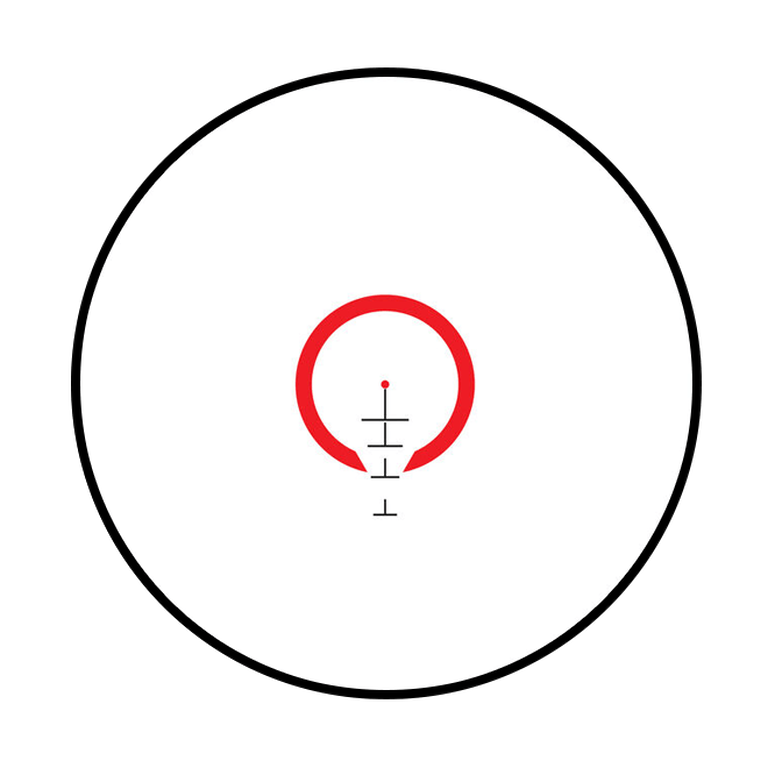
BTR-1 BDC Reticle
Illuminated circle dot with BDC hashmarks.
What this means: The circle and dot in the center are illuminated to allow for maximum visibility in any lighting, while the BDC hashmarks allow the user to compensate for bullet drop at longer distances. This reticle is calibrated for use with .223 Rem/5.56 ammunition loaded with 55-62 grain bullets.
Shop BTR-1 BDC Scopes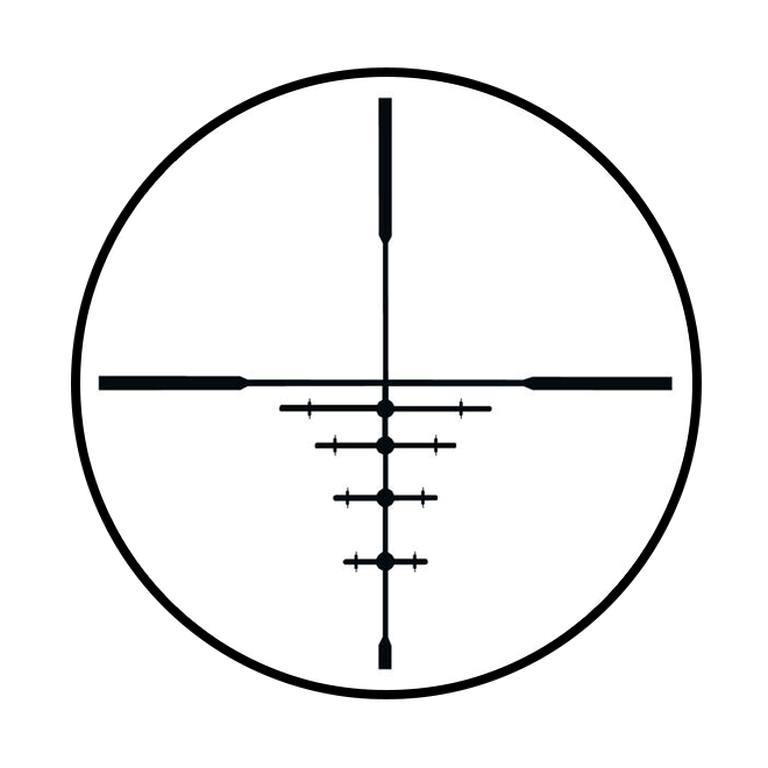
DOA 600 Reticle
A BDC reticle with drop points out to 600 yards. Features the Rack Bracket System allowing for measurements of antlers from hashmarks in the reticle.
What this means: The DOA 600 reticle was designed to work with most general hunting rounds allowing the user to shoot accurately out to 600 yards. This reticle also allows the user to measure antlers with hashmarks that measure 17 and 24 inches across.
Shop DOA 600 Scopes
DOA Quick Ballistic
A reticle with a traditional crosshair and BDC drop points that were designed to help shoot longer distances without having to do calculations or knowing ballistics.
What this means: A simpler version of the DOA 600 reticle featuring a traditional crosshair and BDC drop points with 5-10 MPH wind holds. Designed specifically for most general hunting rounds and bullet weights.
Shop DOA Quick Ballistic Scopes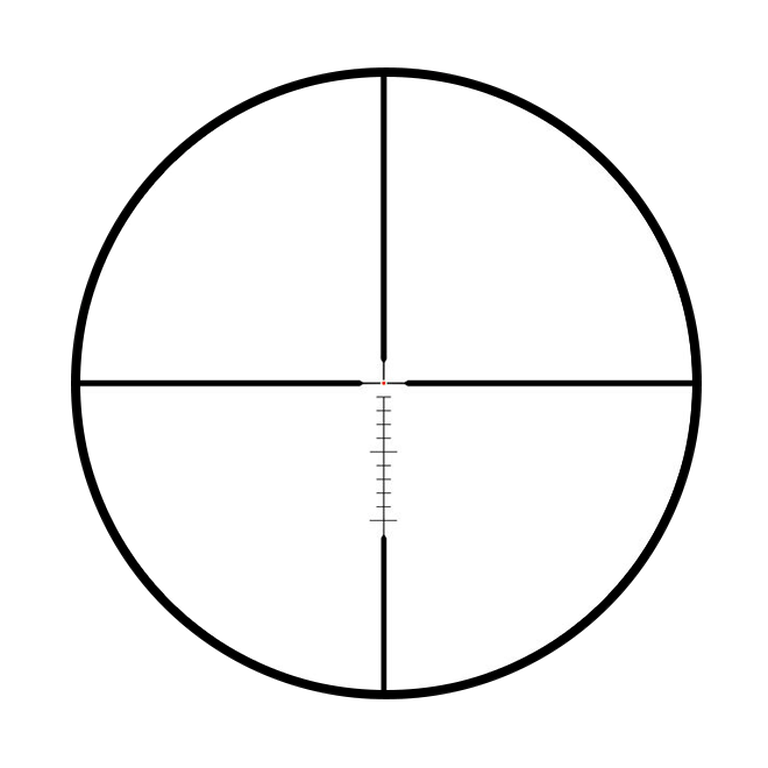
Dot Drop Reticle
An illuminated 1/2 MOA floating dot with extended vertical MOA hashmarks allowing for more precise shots at longer distances.
What this means: The illuminated dot allows for extremely accurate shots when lighting can be an issue. The extended MOA hash marks allow for more precision at longer distances. Can be used for all bullets calibers, weights, and velocities when calculations and ballistics are known.
Shop Dot Drop Scopes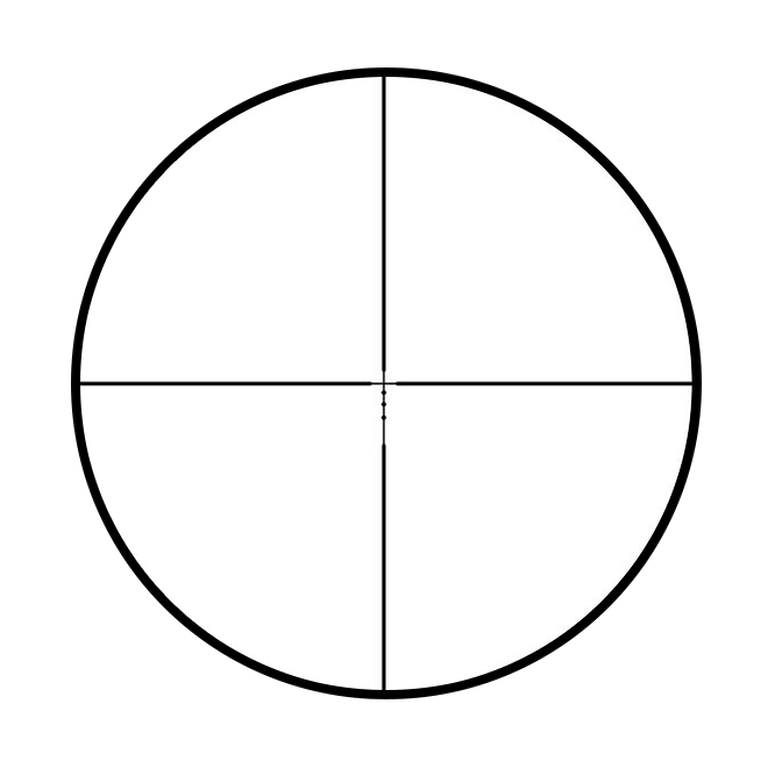
Drop Zone 22 Reticle
A simple BDC reticle designed for 22 caliber firearms.
What this means: The BDC reticle has specific drop points designed for the bullet drop of a 22-caliber round. Specifically for a 40 grain 22 LR, with drop points out to 125 yards.
Shop Drop Zone 22 Scopes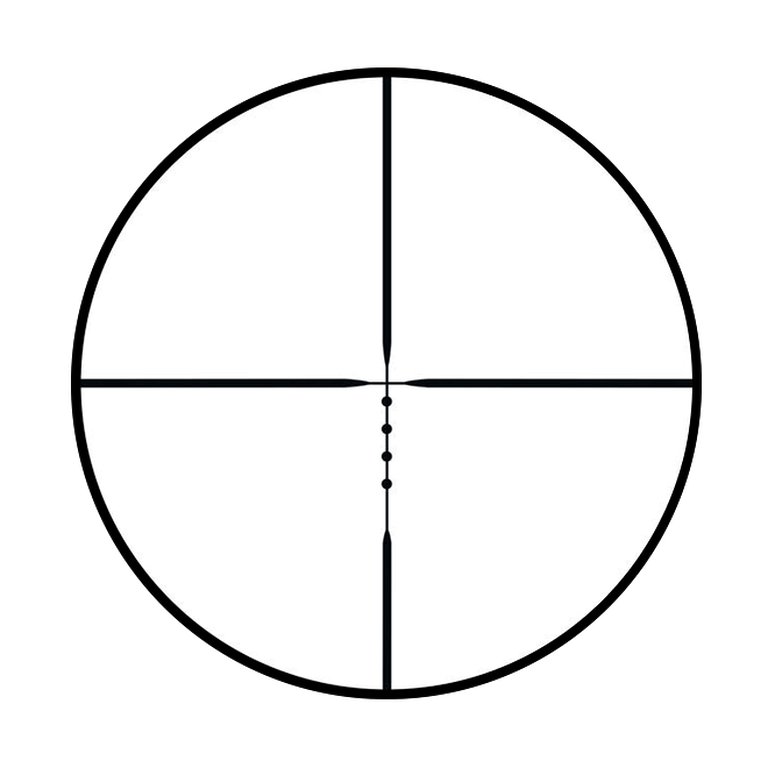
Drop Zone 223 Reticle
A BDC reticle with drop points that are calibrated for the .223 round.
What this means: The reticle is a simple traditional crosshair reticle with BDC drop points specifically for the .223 round. The Drop Zone 223 reticle is calibrated for use with 223 Rem/5.56 ammunition loaded with 55-62 grain bullets.
Shop Drop Zone 223 Scopes
Graduated Reticles
These reticle designs offer reference points at standard increments (usually MOA or MIL) along both the vertical and horizontal axes. These scopes work for any caliber bullet, grain, and velocity.
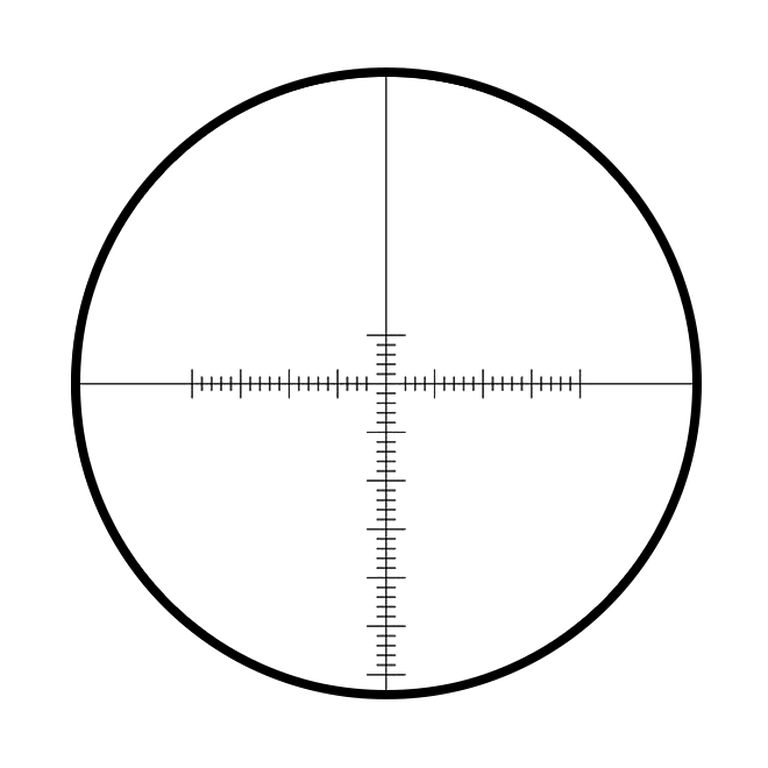
Deploy MOA Reticle
A graduated reticle with MOA hashmarks on the horizontal and vertical stadia designed with .18 MOA stadia for better precision.
What this means: Designed to allow holdovers for windage and elevation in a basic configuration with a 1 MOA grid. Considered one of the most classic graduated reticle designs.
Shop Deploy MOA Scopes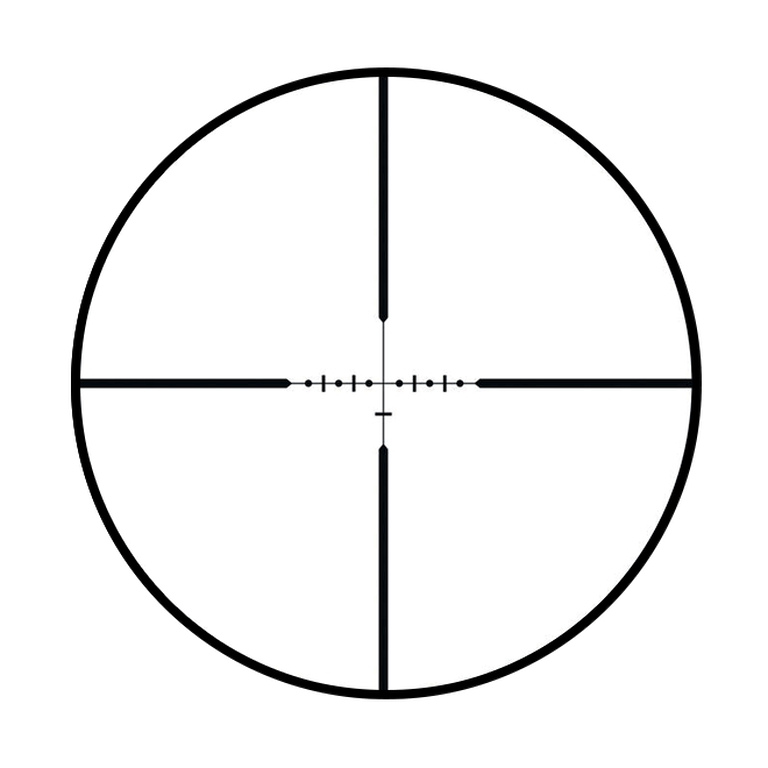
Windhold Reticle
The Windhold reticle features crosshairs with MOA hashmarks that extend more horizontally than vertically.
What this means: The Windhold reticle was designed for environments where wind is a major factor in affecting the trajectory of the bullet allowing for a large range of wind holds on the horizontal stadia with 2 holdovers on the vertical stadia. Designed for the user to make vertical adjustments using the elevation turret.
Shop Windhold Scopes
Hold-Over Reticles
These complex designs, typically in first focal plane formats, have reference points on both axes, plus additional points that help the shooter calculate hold for both wind and elevation.
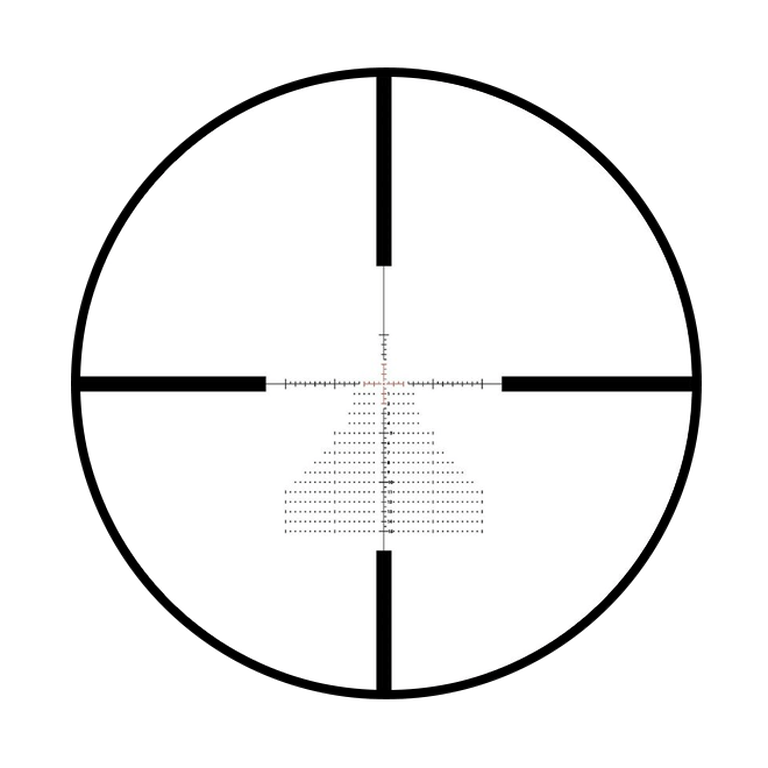
Deploy MIL Reticle
A floating dot reticle with MIL hashmarks on the vertical and horizontal stadia, with Christmas tree style holdovers and wind holds.
What this means: The Deploy Mil reticle provides a very accurate means of range estimation. The mil markings also allow for exact compensation for shooting in a crosswind. There are hashmarks at every 0.5 Mil for accurate elevation holdover. With accurate ballistic calculations, the Deploy Mil reticle delivers accurate shots, every time.
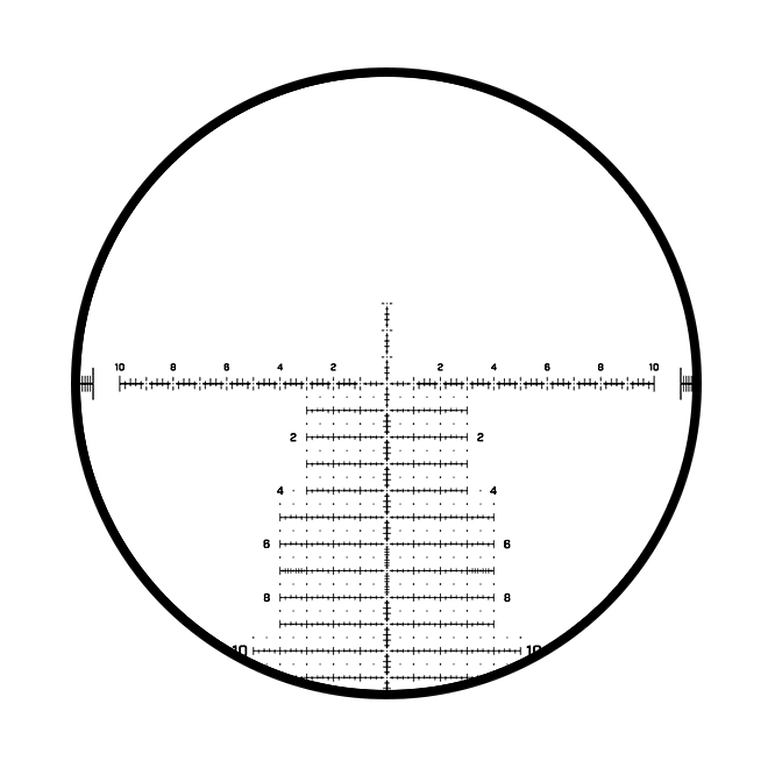
EQL Reticle
A floating dot reticle with MIL hashmarks on the vertical and horizontal stadia, with a different design of Christmas tree style holdovers and wind holds. Also includes moving target holds on the sides of the crosshairs.
What this means: Features a primary floating dot Point of Aim (POA) and secondary floating dot POA’s along the main stadia at 1 MRAD increments. Other features include: a bisected hash system inside of 1 MRAD along the horizontals and along the entire vertical stadia, which transitions outside of 1 MRAD in the horizontal directions to a wave style hash system for quick counting; Floating half value dots; Overlap half value dots, and a 1/10 MRAD milling section positioned along the vertical stadia at the 7 MRAD holdover position. All these features allow the shooter to make incredibly far, accurate shots.
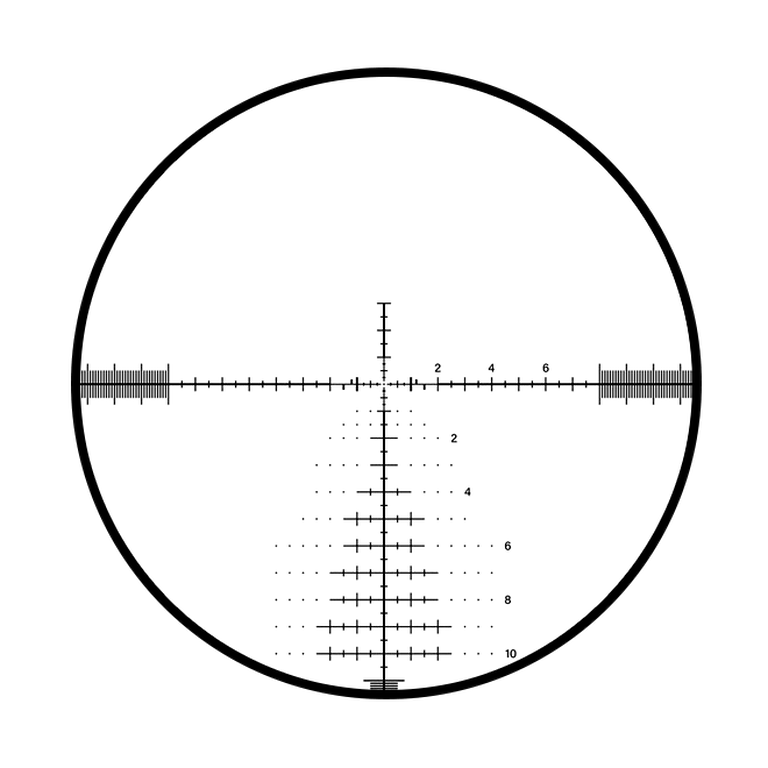
G4P Reticle
Like the design of the EQL reticle with a series of vertical hashmark and wind holds that allow the shooter to be more precise when outside elements are an influencing factor, but with a simpler design.
What this means: The G4P reticle provides a clean reticle space for fast target acquisition. In contrast, the hybrid hash-dot tree provides for intuitive and efficient holds without using the turrets. The numerically designated MRAD markings extend from the center of the crosshairs outward to the right in .25 MRAD increments on the horizontal crosshair. The numbers were removed on the left side of the reticle to keep the reticle plane clean, but the reference points coincide with the markings from the right side of the crosshair.

Deploy MOA 2 Reticle
The Deploy MOA2 Reticle is a 1/2 MOA tree reticle that features refined and staggered line weights, bisected hashes, terminated hold-under for a clearer field of view and a milling section for fine target measurement.
What this means: The Deploy MOA 2 reticle is based off our highly popular Deploy MIL 2 reticle but updated to be a 1/2 MOA tree, and is illuminated for 36 MOA down, 20 MOA up, and 34 MOA to the sides.
Shop Deploy MOA 2 Scopes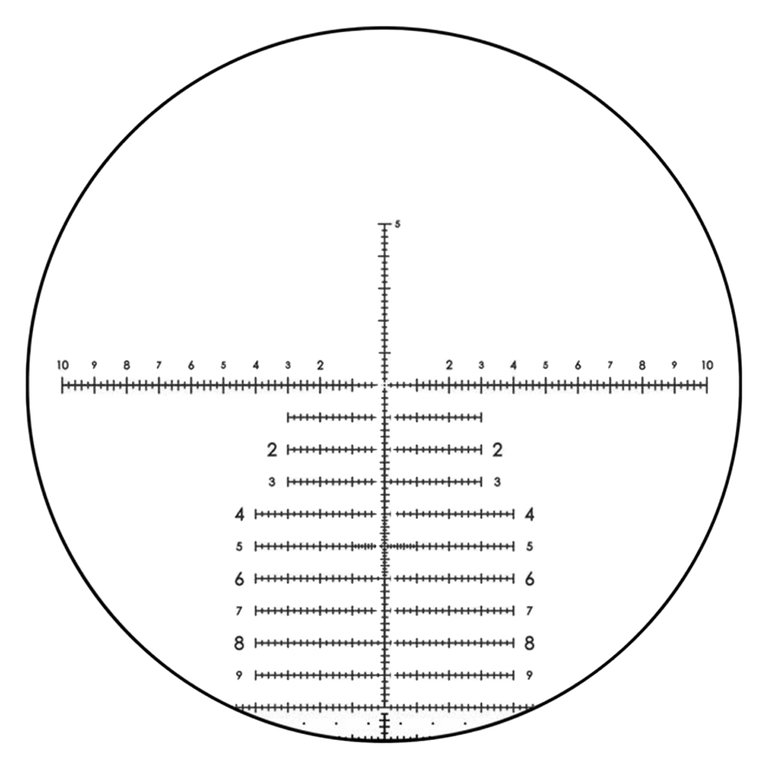
Deploy Mil 2 Reticle
A 2/10 MRAD tree reticle. Reticle features include refined and staggered line weights, bisected hashes, terminated hold-under for clearer field of view, and milling section for fine target measurement.
What this means: The Deploy Mil 2 reticle is based off our highly popular Deploy MIL but updated to be a .2 MRAD or 2/10 reticle. The Deploy Mil 2 reticle provides a very accurate means of range estimation. The mil markings also allow for exact compensation for shooting in a crosswind.
Shop Deploy Mil 2 Scopes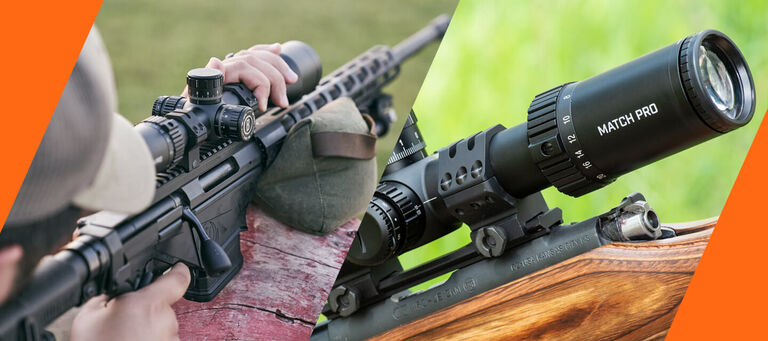
Bushnell Reticle Basics
Simply put, a reticle is the crosshair or pattern seen through the eyepiece of your scope. Used for the hold position based on distance, ballistics, and environmental factors. No one reticle is better than others as all have different applications. The right fit is very personal to the shooter’s preference, scope, and the type of activity the shooter will be participating in.
First Focal Plane (FFP)
Second Focal Plane (SFP)
Basic Reticle Types
Reticles are grouped into four categories.
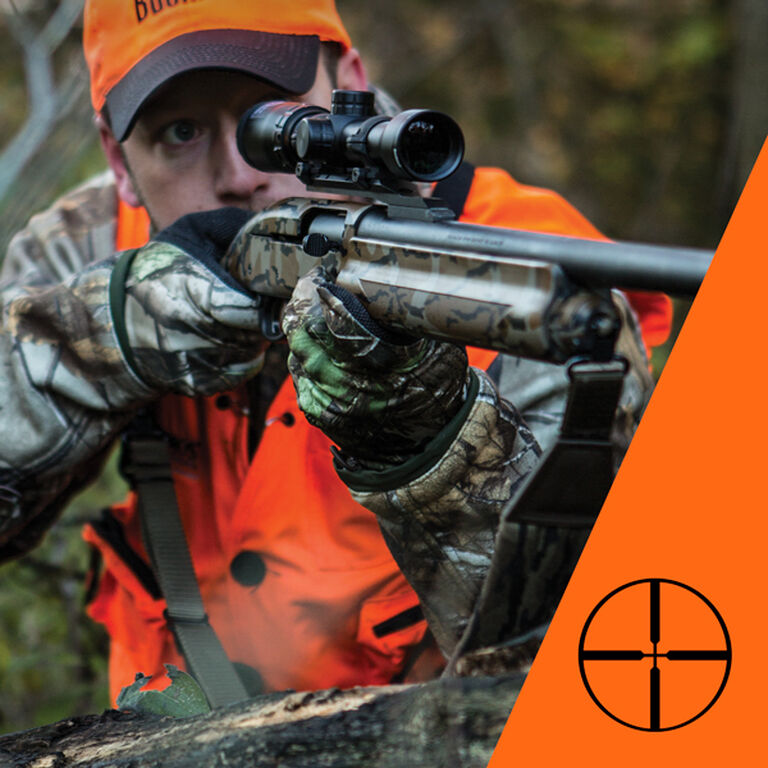
Traditional Crosshairs
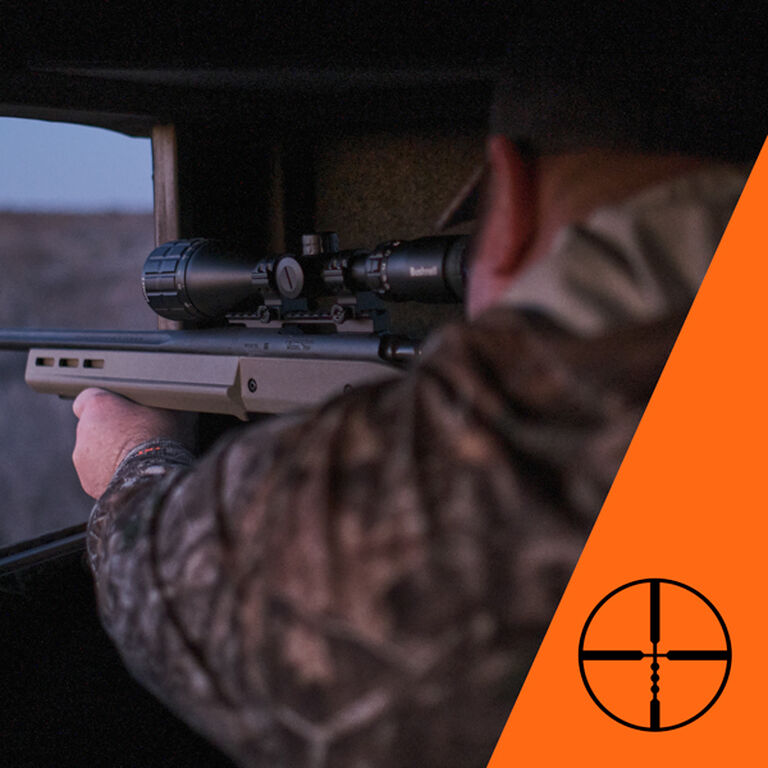
Ballistics Drop Compensation (BDC)
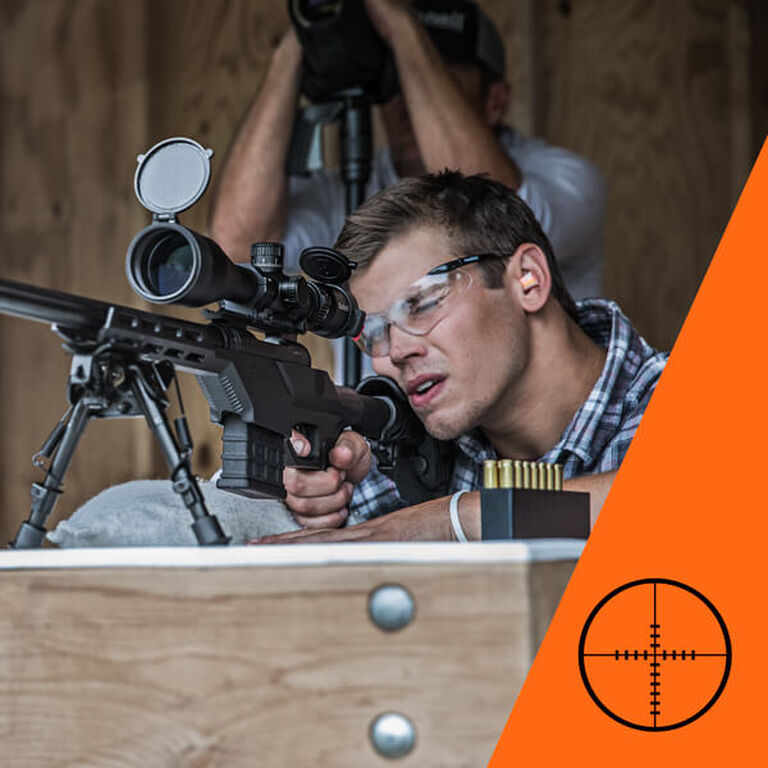
Graduated Reticles (mil or MOA)
